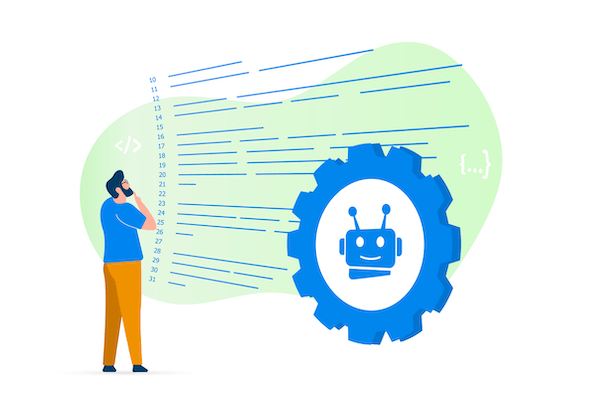Are you tired of trying to plan out your software projects? Do you wish there was a way to boost your productivity and streamline the product discovery process? Look no further, because AI user story map generators may just be the solution you’ve been searching for.
By utilizing user story map generators, you can effectively map out your ideas, identify gaps in the user journey, and create loveable and engaging products with the help of Artificial Intelligence.
In this article, we will explore the benefits of using AI user story map generators and how they can help you become more efficient and effective. Say goodbye to deadline anxiety and hello to a new level of productivity.
Contents
What is a user story map?
A user story map is a powerful tool that helps you create a better product by focusing on user goals, needs, and expectations. It’s essentially a visual representation of the user journey, where each user story represents an action taken by the user. By mapping out these steps across multiple stages of their journey, you can identify potential gaps or areas for improvement.
This is especially useful when it comes to product discovery, as it provides clear guidance on what features need to be added or removed to improve the user experience.
Story maps help organize ideas into rows and columns giving an overview of your project. In other words, story maps are two-dimensional backlogs that anyone can understand. It’s that simple and powerful.
How to get started on a software project with story mapping?
Getting started with user story mapping doesn’t have to be an exhausting task.
It’s quite logical and you can get started in no time. Here are some tips on how to make the most of your story-mapping journey:
- Choose a story mapping tool that helps you learn story mapping with in-app messages, templates, examples, and AI assistance. We recommend StoriesOnBoard.
- Gather feedback from users. As mentioned before, this is a crucial step in understanding what users need and want from your product. Collecting feedback via surveys, interviews, or focus groups will give you valuable insights into their goals and how they interact with your product. Ask your existing users or target groups questions about their needs and expectations, and pay close attention to the details they provide. These insights will be invaluable in creating an optimal user journey for them.
- Start creating a backlog of user goals, steps, and user stories. A backlog is essentially a list of tasks that need to be completed for the project, each one representing a “user story”.
- Or you can use an AI user story map generator to generate a systematic map of user goals, steps, and user stories with acceptance criteria. By utilizing an AI user story map generator, you can quickly and easily create a really good, visual backlog in the form of a story map that helps you understand how users interact with your product. This map also shows the different stages of their journey, plus, a good AI user story mapping tool enables you to identify gaps or areas for improvement.
Build your First User Story Map
Creating your first user story map is easy. Start by gathering feedback from your target users, then use an AI user story map generator to quickly and easily create a visual representation of the user experience. Pay close attention to different use cases edge cases that could impact the product in subtle ways, and consider any gaps or areas for improvement.
At the end of the day, user story mapping can be a great way to boost your writing productivity and ensure you create products that are loved and engaging.
About user story and story map templates
User story and story map templates are great starting points for creating effective materials for your software project. They provide a learning curve and a framework for developing user stories and help you get the experience to work faster and more efficiently. Plus, they’re easy to use, so you can get started quickly and save time in the process.
But AI is a game changer, it helps you like an experienced – but not completely reliable – team member. Templates and examples are better for learning, but if you need to get ideas to start, or show some progress very fast, and later have the opportunity to review and discuss the AI-generated content with your team, AI assistance is a better choice for you.
Common user story mapping pitfalls to avoid
When it comes to user story mapping, it’s important to be aware of some of the common pitfalls that can derail your efforts. Here are a few things to keep an eye out for (whether or not using AI assistance).
• Not gathering enough data or feedback from users. One of the most crucial aspects of user story mapping is understanding what users need and want. If you don’t gather enough data or feedback from them, you won’t have a clear picture of how to optimize their experience.
• Overlooking essential details. User story maps provide a high-level view of the user journey, but they can often overlook essential details such as access points, use cases, and edge cases that could impact the product in subtle ways. Pay close attention to the details to ensure your product is optimized for success.
• Not considering different use cases. When mapping out a user story, you need to take into account different use cases, such as how users might interact with the product in various scenarios. This will help you create a better experience that caters to everyone’s needs.
Expand your knowledge, follow us for more!
AI Tools for user story mapping
The benefits of AI user story map generators
An AI user story map generator offers many advantages over traditional methods, from quickly identifying gaps in the user journey to reducing time spent on creating and maintaining complex maps. Here are some of the key benefits:
• Automated analysis. AI-based tools can automatically analyze user data and feedback, providing insights into areas that need improvement or optimization. This eliminates the need for manual analysis and speeds up the process of creating effective visuals.
• Easy to use. AI user story map generators are easy to learn and understand, so you can get started quickly without having to spend hours learning how to use them.
• Flexible. No two projects are the same, so your tool must be flexible enough to meet your needs. With AI tools, you can easily customize maps based on different user scenarios or changing requirements.
Supercharge your user story mapping experience with AI
Transform your user story writing experience with next-gen AI, and start your projects with AI assistance! An AI-powered user story mapping tool can not only make your story mapping process more efficient, and help you make more confident product decisions, but can also help you create a visual backlog in seconds that everybody understands.
AI can help you quickly identify gaps in the user journey, and add new ideas and a point of view – like an additional experienced pro in your team. These next-gen tools are perfect for improving the teamwork and user experience of any product and last but not least accelerating the project’s progress and reducing stress. So why not give it a try? You’ll be amazed at how much smoother and more productive your workflow can become.
An AI-enabled user story mapping tool like StoriesOnBoard’s AI user story generator revolutionizes the way we build backlogs to represent the user goals and needs, and the user journey by user stories. By utilizing AI, you can quickly and easily build a story map outline, identify potential gaps in the user journey, and customize maps based on different use cases or changing requirements. Best of all, these tools are incredibly easy to use, so you can get started right away and supercharge your user story mapping experience!

Build better products faster.
Get started with StoriesOnBoard today!
14-day Free Trial. No Credit Card is Required.
Frequently asked questions about AI story map generation
Are AI user story map generators easy to use?
Yes, absolutely! AI user story map generators are incredibly easy to learn and understand. You can get started right away without having to spend hours learning how to use them. Plus, they offer many advantages over traditional methods, from reducing time spent on writing user stories and acceptance criteria to quickly identifying gaps in the user journey.
You just simply add some details about your project, and the AI user story map generator creates a story map outline you can use, discuss, and improve.
What can I gain from using an AI user story map generator?
AI user story map generators can save you time and effort, reduce time pressure, and provide some new ideas and insights into how users interact with your product, what are their goals and needs, and what tasks should be on the dev teams’ backlog to fulfill them.
Are AI user story map generators reliable?
AI user story map generators can offer a quick and efficient way to create user story maps, they can also save time and effort by automating the process of generating user story maps.
However, the reliability of an AI user story map generator depends on the accuracy and quality of the AI algorithms and data used, and the prompts they were generated with.
The technology improving fast, but it’s always important to review and validate the generated user story maps for accuracy and completeness.
Conclusion
Using an AI-powered user story mapping tool can be a great way to improve your workflow.
By utilizing AI user story map generators, you can easily create story map outlines, so you don’t need to start them from scratch. An AI-generated story map can take your product discovery process to the next level, boost your productivity, and help your team collaborate better and faster. It also helps brainstorm new ideas identify potential gaps in the user experience, and allow you to create lovable and engaging products.
